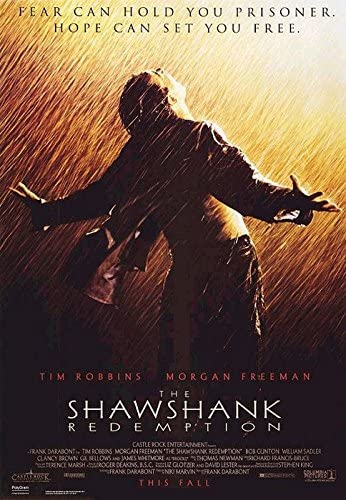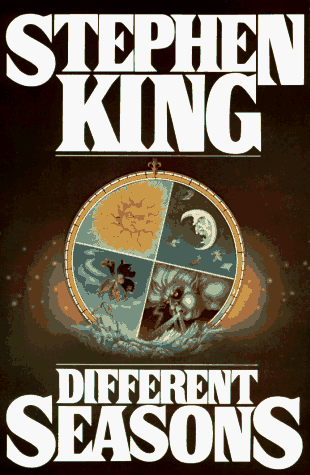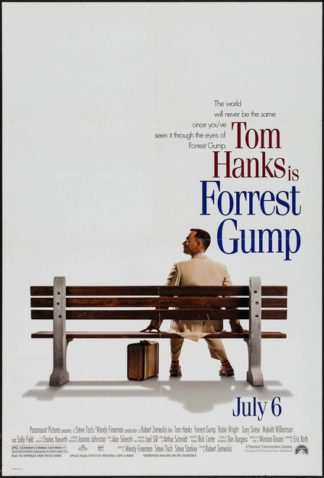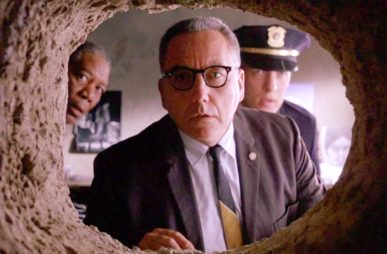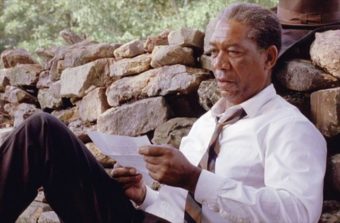WARNING: Here there be spoilers.
One of the more bizarre film-related occurrences of our time is the ascension of THE SHAWSHANK REDEMPTION from the entertaining trifle it was (and is) to Great Film status. For the past two decades it’s been a constant in the top five of the IMDB’s Top Rated Movies listing, and right now it’s at #1. THE SHAWSHANK REDEMPTION: the greatest movie ever made? That’s something I never saw coming, and I strongly doubt anyone else did, either.
THE SHAWSHANK REDEMPTION (1994) Trailer
THE SHAWSHANK REDEMPTION, starring Tim Robbins and Morgan Freeman, was released by Columbia Pictures in October of 1994. The feature directorial debut of Frank Darabont, it was adapted from the Stephen King novella RITA HAYWORTH AND THE SHAWSHANK REDEMPTION, which appeared in DIFFERENT SEASONS, a four part 1982 collection that also provided the source texts for STAND BY ME (titled THE BODY) and APT PUPIL. RITA HAYWORTH AND THE SHAWSHANK REDEMPTION, which occurs in the “Spring” portion of the book (it’s headlined “Hope Springs Eternal,” whereas APT PUPIL is headlined “Summer of Corruption” and THE BODY “Fall from Innocence”), concerns Andy Dufresne, a prisoner in the (fictitious) Maine-based Shawshank Prison. Dufresne is a banker incarcerated for killing his wife and her lover, a crime he maintains he didn’t commit.
The story is told by Red, a prisoner so named because of his “carroty red hair” who becomes part of Andy’s crew. After about thirty years of confinement Andy breaks out of Shawshank in a thoroughly implausible succession of events (the particulars of which I’ll get to in a bit), leaving Red on his own. Eventually, though, he gets paroled, and fulfills a promise he made to Andy that involves a fateful find in a field, and the restoration of Red’s long-dormant sense of hope and idealism.
As in DIFFERENT SEASONS’ other tales, RITA HAYWORTH AND THE SHAWSHANK REDEMPTION is pretty atypical Stephen King fare. As he makes clear in his afterward, King at the time was afraid of being “typed” as a horror writer, and so put out this collection against the better interests of his agents and publishers. The book doesn’t appear to have done much for King’s reputation, although it did have a sizeable effect on his filmic career.
Prior to THE SHAWSHANK REDEMPTION, Frank Darabont had adapted King’s tale “The Woman in the Room” for the so-called Dollar Baby program (in which King sells the film rights of his stories to film students for a dollar). THE WOMAN IN THE ROOM is unique in the Dollar Baby lexicon in that it was released on VHS (together with Jeff Schiro’s THE BOOGEYMAN), doubtless because, as King has claimed, it was among the best-ever films adapted from his stories. Darabont followed it with several screenwriting assignments (including A NIGHTMARE ON ELM STREET III: DREAM WARRIORS and THE FLY II) and directorial chores on the 1990 telefilm BURIED ALIVE.
THE WOMAN IN THE ROOM (1984) Trailer
The filming of SHAWSHANK was reportedly quite fraught (co-star David Proval claims Darabont was clueless about directing actors) and the finished film wasn’t much of a success (for which the title has been blamed), although it did secure several Academy Award nominations. It was on VHS, and endless showings on PBS, that THE SHAWSHANK REDEMPTION, in true cult movie fashion, made its mark on the public’s consciousness.
I was among the few who saw the film during its initial theatrical run, in which form I quite liked it. That’s despite the fact that even back in ‘94, when there was nothing else like SHAWSHANK, it seemed a bit overly schmaltzy–or as one critic termed it, “MIDNIGHT EXPRESS goes GUMP.” That comparison to another 1994 release is appropriate, as THE SHAWSHANK REDEMPTION is very much of a piece with FORREST GUMP. Like SHAWSHANK, GUMP is a primo chunk of contrived uplift that appeared at a most incongruous time (1994, let’s not forget, was the year of NATURAL BORN KILLERS and PULP FICTION), and, also like SHAWSHANK, it hasn’t dated well at all.
Quite a few beloved nineties films are now looking stodgy (I challenge you to try arguing that point after sitting through THE FISHER KING, THE FUGITIVE or LOCK, STOCK AND TWO SMOKING BARRELS), and that’s certainly the case with FORREST GUMP. Hard though it might be to believe nowadays, GUMP seemed fresh and even subversive back in ‘94. Its sly tweaking of the beloved underdog trope was quite daring; most such movies involved sporting competitions in which the hero is called upon to demonstrate his worth, but in GUMP the title character’s athletic brilliance is taken as a given, with his triumphs due entirely to idiocy or happenstance.
If I’m no longer too high on FORREST GUMP, that’s due to a number of factors. There’s the fact that its unabashed celebration of idiocy, when put into proper perspective, isn’t that divergent from quite a few other Hollyweird productions both pre and post 1994, most of them starring GUMP’s headliner Tom Hanks (as Hanks’s character boasts in 1986’s NOTHING IN COMMON, “Childish, immature and selfish? That’s right, I am. Do you how much money I make for thinking this way?”). There’s also the fact that I’ve since read the source novel by Winston Groom, whose protagonist was just as stupid but a lot tougher and more opinionated than the guy in the movie, and that, simply, back then I evidently had a much greater tolerance for dialogue like “I may not be a smart man but I know what love is” than I do now.
My tolerance for THE SHAWSHANK REDEMPTION has likewise reached its limits. Certainly the film is entertaining, and notably stylish in its mixture of nineties grit and archaic sentimentality. Where it stumbles is in the switching of Red’s ethnicity from white Irish to African-American, thus adding some prickly racial overtones, and in the arena of plausibility.
Regarding that latter point, to follow this film the viewer has to accept that, 1) the protagonist is able to tunnel through several feet of wall with a tiny rock hammer, and 2) accomplish this by hiding his actions behind posters that the prison guards never think to look behind (Darabont at least excised a passage from the novella in which a Dufresne cellmate complains about a “Bad draft in that cell”), all while, 3) maintaining a secret identity on the outside world and a clandestine bank account. As for the breakout, it involves, 4) a crawl through a sewer pipe with no impediments (King acknowledges that Dufresne may encounter “a heavy-gauge mesh screen at the end of” the pipe, which is indeed a distinct possibility). Furthermore, we’re asked to believe that, 5) Red, as an old man, is able to keep a decidedly hard-to-remember word (“Zihuatanejo”) in his mind for several years while, 6) staying in the same halfway house, and indeed the same room (!) as that of a former ex-con, and that, 7) a black parolee in the early 1970s somehow manages to make it across the Mexican border without incident.
So yes, the film is somewhat less than convincing. But as we all know, that hasn’t stopped it from attaining a following that dwarfs those of cult mainstays like THE TEXAS CHAINSAW MASSACRE and BLADE RUNNER. SHAWSHANK clearly informed Darabont’s second feature THE GREEN MILE (1999), another Stephen King prison-set adaptation whose gritty-schmaltzy air is nearly identical to that of the earlier film. It was followed by the THE MAJESTIC in 2001, in which the schmaltz won out, and THE MIST in 2007, wherein Darabont returned to the Stephen King fold once again for a nifty old school horror-fest. It remains Darabont’s last feature directorial credit; an adaptation of King’s THE LONG WALK has been broached but never put into production, with Darabont concentrating his energies on the cable TV series THE WALKING DEAD and MOB CITY.
Will audiences continue expending their energies on THE SHAWSHANK REDEMPTION? Most likely, although I suspect that will change, given that modern moviegoers appear to have grown weary of inspiration porn, white savior dramas and old school silliness, all of which perfectly describe THE SHAWSHANK REDEMPTION.

